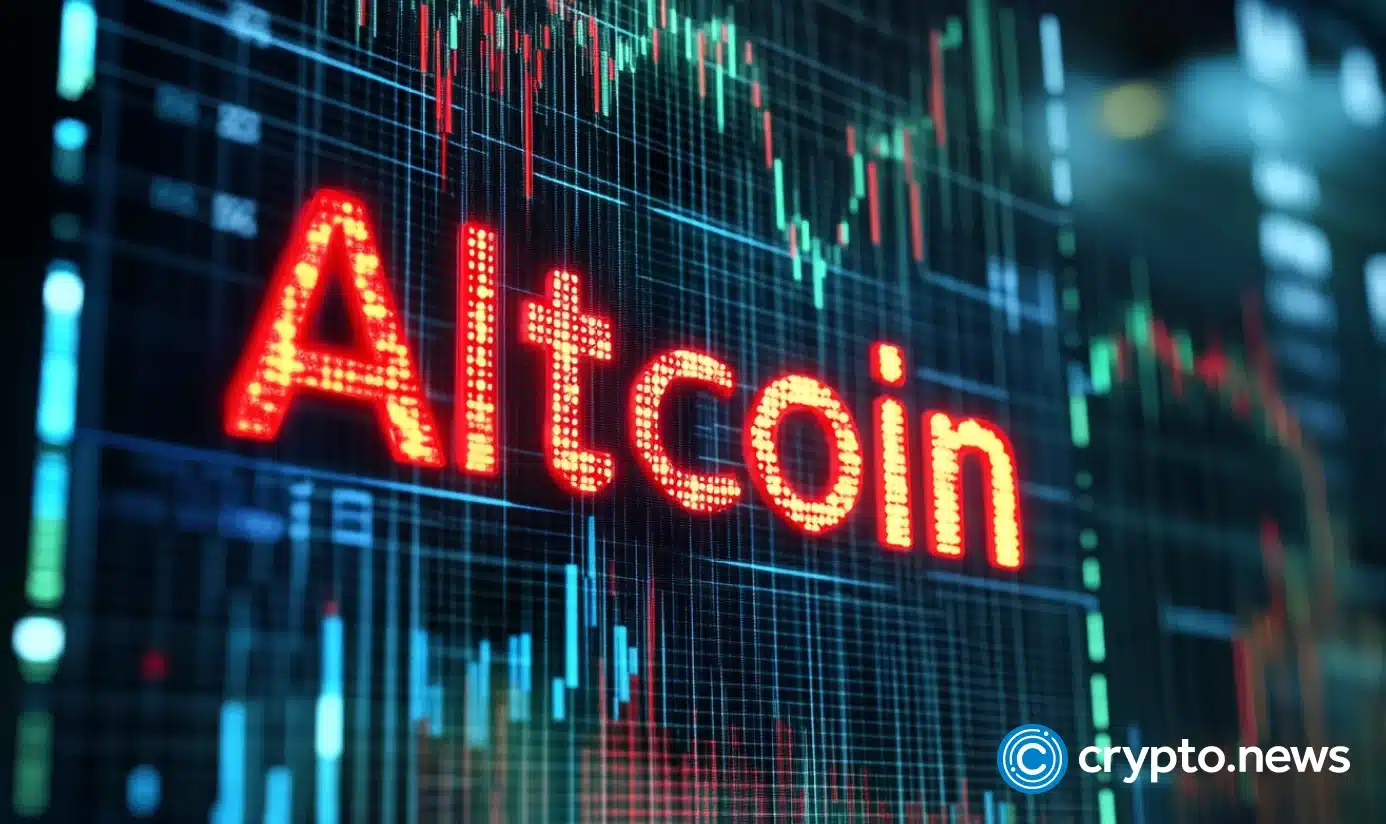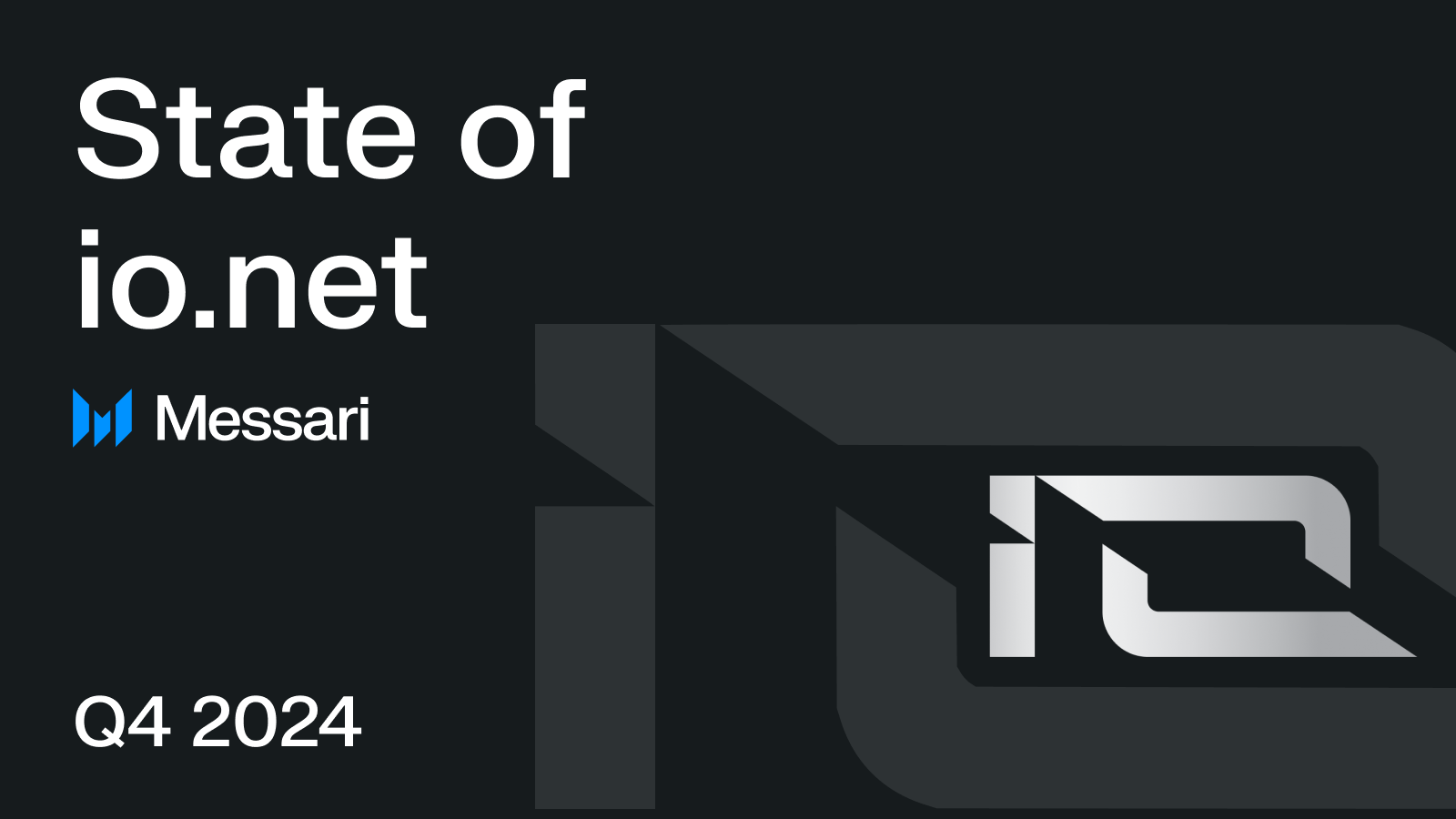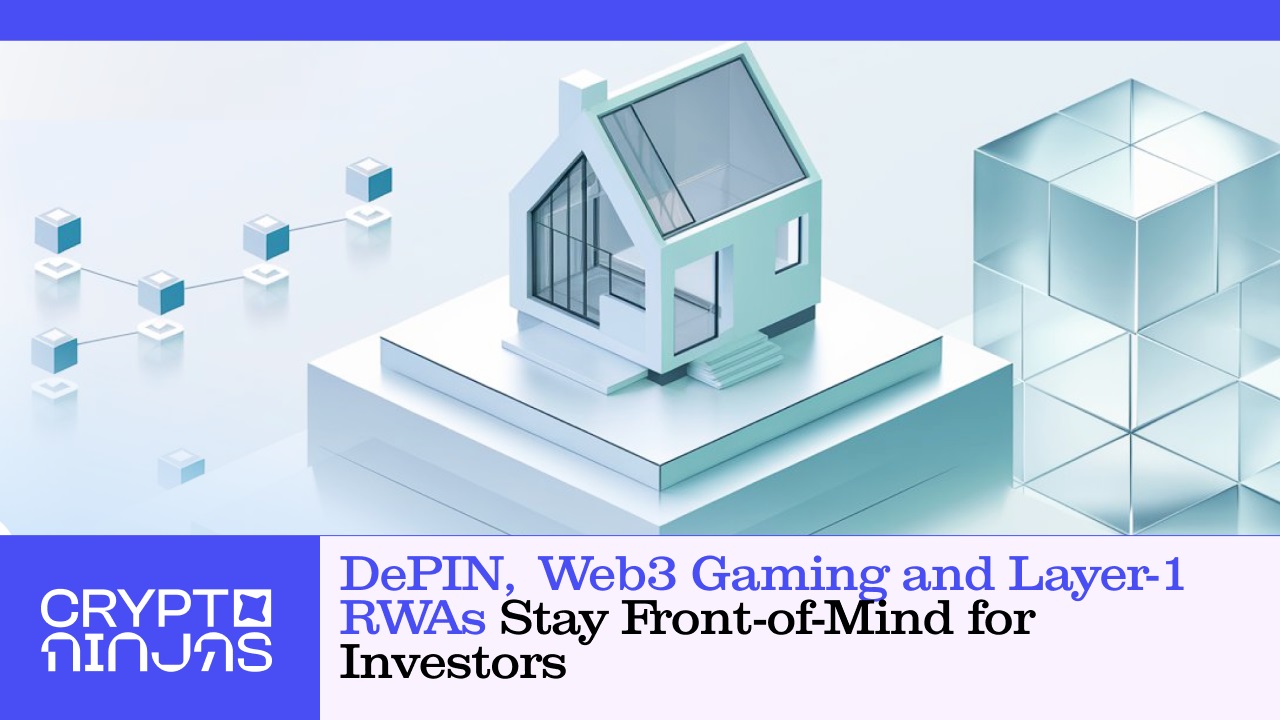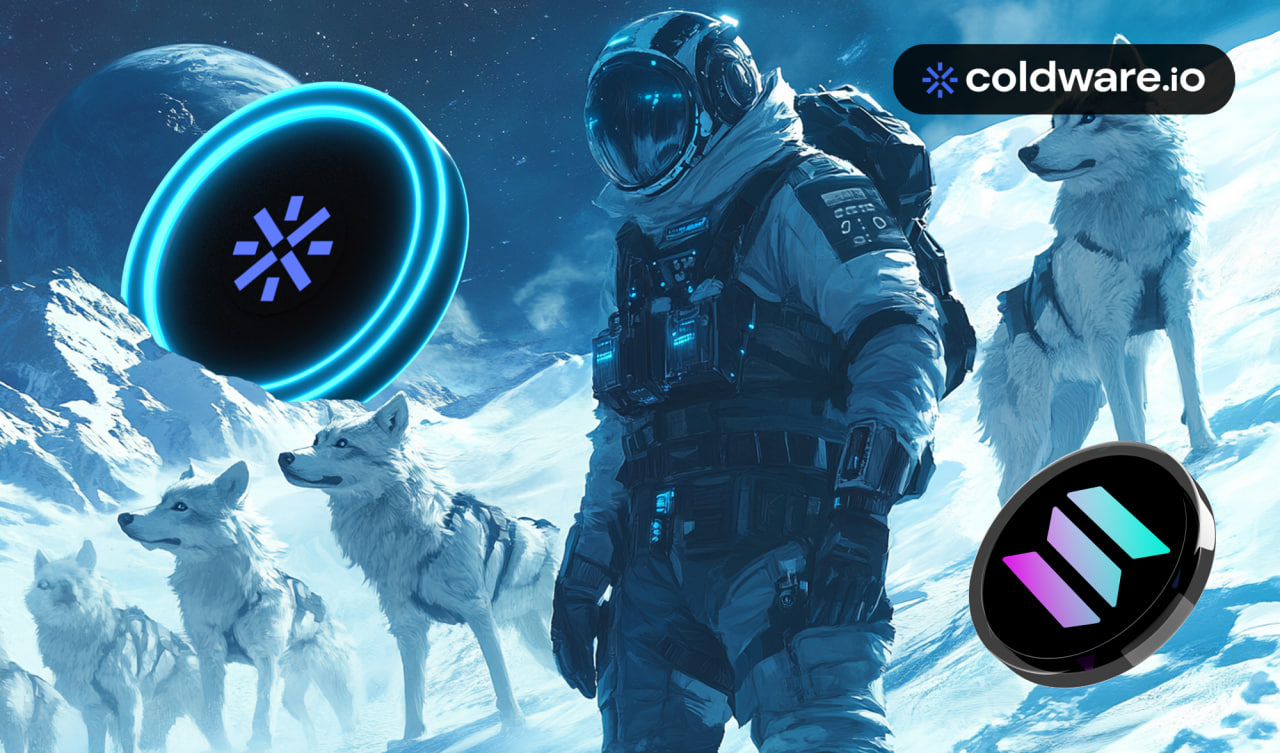Latest Ethereum News

5 months ago
Exclusive Interview with Raullen Chai, Co-Founder and CEO of IoTeX
Exclusive Interview with Raullen Chai, Co-Founder and CEO of IoTeX
Raullen Chai, a Ph.D. in cryptography from the University of Waterloo and with prior engineering roles at Google, Uber, and Oracle, leads IoTeX. He envisions DePIN—decentralized physical infrastructure networks—connecting IoT devices and blockchain to empower users with data ownership. IoTeX 2.0 aims to cater to developers, enterprises, and consumers, bridging the gap with modular tools like W3bstream and token primitives.
Raullen discusses IoTeX's goal of onboarding 100 million devices in the next 3–5 years. The strategy involves partnerships with hardware manufacturers, community-led DePINs like DIMO and GEODNET, and empowering grassroots adoption. By expanding developer onboarding and scaling middleware, IoTeX plans to achieve this ambitious target.
Raullen highlights the importance of the 'Identity' layer in the DePIN reference architecture. He emphasizes the need for secure and interoperable machine identities to establish trust in decentralized physical systems. IoTeX's ioID provides devices with programmable identities, revolutionizing trust in DePINs.
W3bstream, a specialized solution for DePINs, focuses on verifiable real-world data ingestion. Unlike general-purpose off-chain compute solutions, W3bstream is tailored for handling physical-world inputs like sensor data and geolocation, bridging the gap between the physical and digital realms.
With ioID's NFT-bound smart contract wallets for machines, IoTeX addresses lifecycle events like hardware replacement and identity migration. By combining secure hardware enclaves and on-chain NFTs, IoTeX ensures auditable continuity and composable trust in device identities.

8 months ago
SEC Settlement with Nova Labs Over Helium Network Dispute
SEC Settlement with Nova Labs Over Helium Network Dispute
The US Securities and Exchange Commission (SEC) recently settled a lawsuit with Nova Labs, the developer of the decentralized wireless network Helium. The agreement involved the dismissal of allegations regarding the issuance of unregistered securities and a $200,000 civil penalty. The lawsuit, filed in January 2025 during former Chair Gary Gensler's tenure, marked one of the SEC's final enforcement actions against a cryptocurrency developer before his departure. The settlement, which includes a dismissal with prejudice, signifies that Nova Labs cannot face similar charges related to the issuance of its native token Helium (HNT) in 2019. The company clarified in an April 10 blog post that the distribution of HNT, IOT, and MOBILE tokens through the Helium Network is not considered securities, as confirmed by the outcome of the settlement.
Nova Labs also agreed to pay the SEC $200,000 to settle civil securities fraud charges without admitting or denying wrongdoing. This development highlights the evolving regulatory landscape in the crypto industry and the implications for blockchain developers and token issuers.

9 months ago
Altcoins Surge Amidst Bitcoin's Decline
Bitcoin's recent decline below $83,000 has marked a continued downturn in the cryptocurrency market, yet some altcoins are defying the trend with impressive gains. Notably, Ancient8 (A8) has experienced a remarkable surge of 160% in just 24 hours, climbing from a low of $0.09628 to $0.259. This significant price movement can be attributed to Bithumb's earlier listing of A8, a major South Korean exchange, which seems to have created a delayed positive effect as investor interest in the token grows.
Market analysts have identified three primary factors contributing to A8's rise: increasing global attention, higher adoption rates, and a mix of strong holders alongside new market entrants. Interestingly, there have been no substantial project developments that could clarify the sudden price increase, indicating that market sentiment is playing a crucial role in this altcoin's performance.
In addition to A8, Apu Apustaja (APU) has also made headlines by climbing 85% over the past day, reaching $0.0002479 from $0.0001325. This meme coin has gained traction on social media platforms, although, like many of its counterparts, it lacks fundamental updates to justify its price surge. Meanwhile, ROAM Token has seen a 41% increase, moving from $0.136 to $0.1917, bolstered by its recent milestone of 2 million global nodes. Despite these bright spots, the broader crypto market remains under pressure, with Bitcoin and Ethereum both experiencing declines, reflecting ongoing selling pressure across major cryptocurrencies.

9 months ago
Coldware (COLD): A Promising Alternative Amid Ethereum's Challenges
The cryptocurrency market is currently experiencing notable fluctuations, particularly affecting major players like Ethereum (ETH). Ethereum has been under bearish pressure, struggling to maintain its price above critical support levels. As investors seek alternatives to diversify their portfolios, emerging projects such as Coldware (COLD) are gaining traction. Coldware aims to create a decentralized Web3 ecosystem that addresses scalability and efficiency challenges that Ethereum is still grappling with. This shift in focus towards innovative projects indicates a potential change in investor sentiment as they look for fresh opportunities amidst Ethereum's struggles.
Coldware (COLD) is positioned for significant growth, especially as its presale numbers surge amidst Ethereum's price corrections. The project offers a user-friendly platform that enhances interaction with decentralized applications, potentially outpacing Ethereum in usability. With a target price of $5, Coldware is attracting attention from investors disillusioned by Ethereum's ongoing issues with network congestion and scalability. As Ethereum's value continues to decline, Coldware's focus on practical applications and real-world use cases gives it a competitive edge, making it a promising alternative in the current market landscape.
While Ethereum's long-term outlook remains optimistic due to upcoming upgrades like Ethereum 2.0, its short-term challenges could hinder price recovery. The recent price drop has raised concerns among investors, with predictions suggesting further declines. In contrast, Coldware (COLD) is leveraging Ethereum's struggles to present itself as a viable investment opportunity. As the decentralized Web3 ecosystem evolves, Coldware's innovative approach may attract both retail and institutional investors, positioning it as a potential major player in the altcoin market in the coming years.

9 months ago
Coinbase Boosts Maple Syrup and Aethir with New Listings
In a significant development within the cryptocurrency market, two Ethereum (ETH)-based altcoins, Maple Syrup (SYRUP) and Aethir (ATH), have experienced substantial price surges following their recent support from Coinbase, one of the largest crypto exchanges in the United States. Coinbase announced the addition of these tokens to its digital asset offerings via posts on the social media platform X. This announcement came shortly after the tokens were included in Coinbase's listing roadmap, which indicated forthcoming support and led to a nearly 40% price increase for both assets.
The price movements of SYRUP and ATH have been remarkable. SYRUP, a decentralized finance (DeFi) protocol that connects borrowers with lenders, saw its price rise from a low of $0.131 on March 12th to a peak of $0.173 within 24 hours, marking a gain of 28.7%. Similarly, Aethir, which focuses on decentralized cloud computing with high-performance GPU capabilities for AI and blockchain-based gaming, increased from $0.034 to $0.040, achieving a 14.4% gain in the same timeframe. These price rallies underscore the impact of Coinbase's endorsement on the market dynamics of these emerging tokens.
The growing interest in both Maple Syrup and Aethir reflects a broader trend in the cryptocurrency space, where decentralized finance and AI-driven solutions are gaining traction. As investors continue to seek opportunities in innovative blockchain projects, the support from major exchanges like Coinbase is likely to play a crucial role in driving adoption and market performance. However, potential investors are reminded to conduct thorough research and exercise caution, as the cryptocurrency market remains volatile and high-risk.

9 months ago
Emerging Low-Cap Cryptos: JetBolt, EigenLayer, and More Set to Breakout
In the ever-evolving landscape of low-cap cryptocurrencies, several projects are gaining significant traction and attention. JetBolt (JBOLT) is making headlines with its innovative zero-gas technology, which is redefining crypto transactions and attracting a surge of interest during its presale phase. Over 340 million JBOLT tokens have already been sold, showcasing the enthusiasm from early adopters and crypto whales alike. This platform not only eliminates gas fees but also integrates AI tools to enhance user experience, making it a promising contender in the crypto market.
EigenLayer (EIGEN) is another standout, revolutionizing Ethereum security through its restaking protocol that allows users to leverage their staked ETH across multiple protocols. With a total value locked (TVL) exceeding $20 billion, EigenLayer is rapidly gaining popularity and is now listed on major exchanges like Binance and Bitfinex. Similarly, Flux (FLUX) is reshaping decentralized cloud computing with its extensive network of over 13,000 nodes, while DappRadar (RADAR) is establishing itself as the go-to analytics platform for Web3, tracking thousands of decentralized applications.
Other noteworthy projects include Qtum (QTUM), which merges Bitcoin's security with Ethereum's smart contracts, and Immutable X (IMX), which is transforming NFT trading with gas-free transactions. As these low-cap gems continue to innovate and expand their ecosystems, the crypto community is keenly watching which of these projects will emerge as the next breakout stars. With their unique offerings and growing user bases, JetBolt, EigenLayer, Flux, DappRadar, Qtum, and Immutable X are poised to make significant impacts in the cryptocurrency market in the coming years.

9 months ago
Consensus Hong Kong 2025: A New Era for Web3 and Blockchain
The Consensus Hong Kong 2025 event marked a significant milestone for the city, establishing it as a vibrant hub for Web3, blockchain, and cryptocurrency. This was the first time the event was held in Hong Kong and the first occurrence outside the US in five years. The conference, organized by CoinDesk, attracted industry leaders and innovators to discuss the evolving regulatory landscape and the institutional adoption of digital assets. With Hong Kong officially recognizing Bitcoin and Ethereum as proof of wealth, the city is positioning itself as a global crypto leader, emphasizing Asia's growing influence in shaping global crypto regulations.
Terri MechKenna, a Humanoid Resources Intern, represented Auki at the event, showcasing the company's commitment to advancing robotics and AI in the blockchain space. Terri's experience included navigating the bustling convention hall, engaging with attendees, and participating in various meetups, including Sui Connect, which brought together Web3 enthusiasts. His interactions highlighted the importance of networking in the rapidly evolving tech landscape. Despite the challenges of mobility in crowded environments, Terri successfully showcased Auki's vision for decentralized machine perception and spatial computing.
As Consensus concluded, the discussions emphasized the need for regulatory clarity to foster blockchain adoption in Hong Kong and beyond. The potential for Hong Kong to rival other global crypto hubs like Dubai and Singapore is becoming increasingly evident. With China's leadership in robotics manufacturing, the integration of Web3 technologies could enhance the industry's capabilities. Auki's mission to build a decentralized network for machine perception aligns with the broader goal of improving collaboration between humans and AI, paving the way for a more interconnected future in the digital landscape.

9 months ago
io.net Achieves Record Revenue Growth and Expands Partnerships in Q4 2024
In the fourth quarter of 2024, io.net experienced remarkable growth, with revenue surging by 565% quarter-over-quarter, reaching an all-time high of $3.1 million. This significant increase was driven by three consecutive months of record-breaking monthly revenue, which also contributed to an annualized revenue rate of $12.5 million. Additionally, the market capitalization of IO, the native token of io.net, doubled from $187.3 million in Q3 to $375.6 million in Q4, reflecting a 48% increase in token price and a 36% rise in circulating supply. Despite a decrease in the daily median number of verified GPUs and CPUs, io.net maintained a robust operational framework, averaging 7,600 verified GPUs and 1,200 CPUs per day.
The decentralized network of io.net, designed to provide scalable and efficient access to compute resources, has also formed 13 new partnerships aimed at leveraging its infrastructure for various applications, including AI agents and identity management solutions. Notably, io.net's collaboration with Dell Technologies integrates its decentralized GPU compute network with Dell's hardware, enhancing the capabilities for enterprises needing scalable GPU clusters for complex workloads. Furthermore, partnerships with organizations like Zerebro and OpenLedgerHQ showcase io.net's commitment to enhancing Ethereum validator operations and combining blockchain-secured datasets with decentralized compute resources, respectively.
Looking ahead, io.net's emission schedule for the IO token projects the distribution of 9.3 million IO to GPU and CPU workers in the first quarter of 2025, with an average of 103,000 IO emitted daily. The network's stringent hardware requirements and hourly Proof-of-Work verification process ensure the authenticity and performance of its decentralized compute resources. As io.net continues to expand its partnerships and enhance its infrastructure, it solidifies its position as a leading platform in the decentralized computing landscape, catering to the growing demands of AI and machine learning applications.

9 months ago
Surge in DePIN Investments and Web3 Gaming: A New Era for Blockchain
In recent months, venture capital investments in decentralized infrastructure, particularly Decentralized Physical Infrastructure Networks (DePINs), have surged, signaling a shift in how traditional industries may operate. This trend is complemented by a notable increase in funding for Web3 gaming, reflecting a growing belief in blockchain's potential to revolutionize entertainment. As the crypto market experiences volatility, with Bitcoin's price fluctuating dramatically, investors are still finding confidence in long-term opportunities within blockchain and crypto startups. Key areas of focus include DePINs, Web3 gaming, and the tokenization of Real-World Assets (RWAs), which are seen as vital connections between traditional finance and the digital economy.
A prime example of this trend is Alchemy's launch of a $5 million "Everyone Onchain Fund" aimed at accelerating Web3 adoption on Ethereum. By providing developers with significant credits for gas and computing, Alchemy is lowering barriers for new projects. This initiative not only supports developers but also enhances the Ethereum ecosystem's capabilities. Similarly, Mavryk Dynamics has secured $5 million to develop a layer-1 RWA tokenization platform, aiming to bridge traditional finance and DeFi. With over $360 million in RWAs already secured, Mavryk is poised to play a crucial role in the growing demand for on-chain asset representation.
The decentralized derivatives market is also gaining traction, as evidenced by Rho Labs' recent $4 million seed round. Rho Protocol facilitates a decentralized rates exchange, allowing users to engage in staking, lending, and trading perpetual futures. This innovation is critical for normalizing funding rates between centralized and decentralized finance, enhancing the overall efficiency of the crypto landscape. As these developments unfold, the integration of blockchain technology into various sectors, including gaming and finance, continues to reshape the future of digital economies, highlighting the immense potential of Web3 solutions.

9 months ago
Coldware Emerges as a Contender in the Blockchain Space
The blockchain landscape is witnessing a significant evolution, with Ethereum (ETH) and Solana (SOL) vying for supremacy in the realms of smart contracts, decentralized finance (DeFi), and non-fungible tokens (NFTs). However, a new player, Coldware (COLD), is emerging as a potential disruptor in the decentralized physical infrastructure network (DePIN) and PayFi sectors. While Ethereum emphasizes security and decentralization, and Solana prioritizes speed and low transaction costs, Coldware is carving out a niche as a blockchain infrastructure tailored for real-world applications, focusing on reliability and enterprise adoption.
Coldware (COLD) is positioning itself as a more efficient and decentralized alternative to its competitors. Unlike Solana, which has faced network reliability issues, Coldware is designed to support tokenized real-world assets and decentralized infrastructure. This focus on DePIN and PayFi solutions is expected to drive significant adoption in the coming years, attracting investments from those who previously supported Ethereum and Solana. Developers are increasingly drawn to Coldware for its promise of speed, efficiency, and security, without the technical complexities associated with older blockchain networks.
As Ethereum continues to grapple with high gas fees and scalability challenges, it remains the most trusted blockchain for decentralized applications and institutional adoption. Meanwhile, Solana's focus on speed has made it a key player in DeFi and gaming, despite concerns over its long-term reliability. As the competition intensifies among these three networks, Coldware's fresh approach and lack of legacy technical debt position it as a strong contender for enterprises and developers aiming to build scalable and secure decentralized applications. The race for blockchain supremacy is evolving, and Coldware is ready to challenge the established giants.
Signup for latest DePIN news and updates